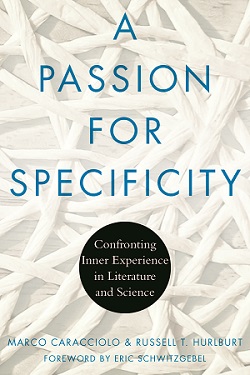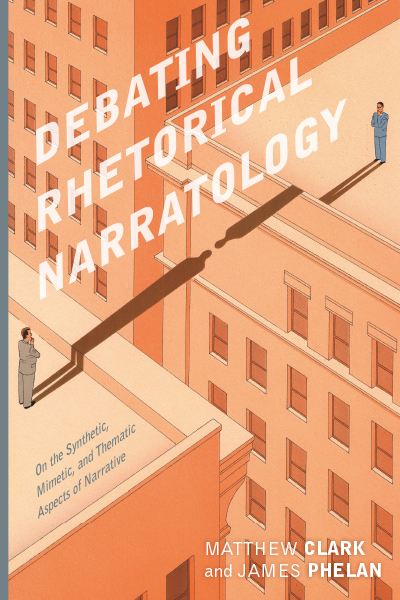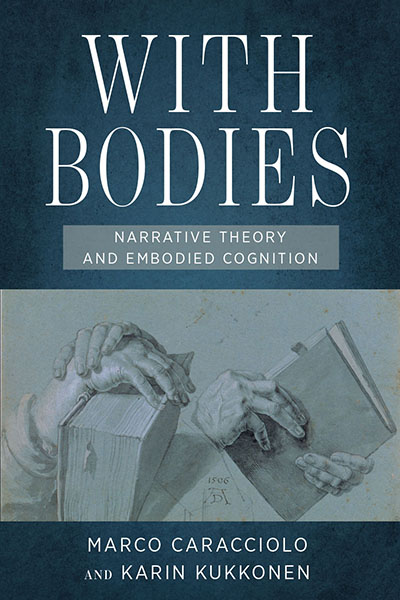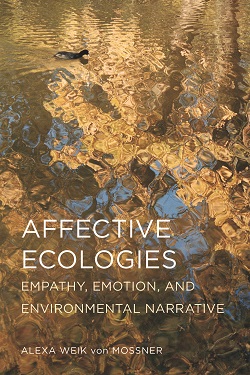“Given the rise of cognitive approaches to narrative, the publication of Caracciolo and Kukkonen’s With Bodies is extremely timely. In combining and extending the works of both authors, it constitutes a unique contribution.” —Nancy Easterlin, author of A Biocultural Approach to Literary Theory and Interpretation
We read not only with our eyes and minds, but with our entire body. In With Bodies, Marco Caracciolo and Karin Kukkonen move systematically through all elements of narrative and put them into dialogue with recent research in neuroscience, cognitive psychology, cognitive linguistics, and philosophy of mind to investigate what it means to read literary narratives bodily. They draw their findings from a wide corpus of material—narratives from antiquity to the present and composed in various languages, from Apuleius’s Metamorphoses to Hilary Mantel’s Wolf Hall—and craft their embodied narratology to retool current theories about authors, narrators and characters, time and space in storyworlds, and plot. Their investigation serves as a foundation for wider discussions on embodied narratology’s contributions to literary history, computation and AI, posthumanism, gender studies, and world literature
“[An] extremely useful and lucid overview of a field often beset by technical terminology … This book offers a substantial contribution to the field of narratology in its revised theory of what happens when we read. It enables new things to be said about the experience of narrative, and will no doubt facilitate the development of many new ideas significant for storytelling across all its forms.” —Stephanie Moran, Leonardo
“With Bodies demonstrates convincingly that narrative can be seen as an inherently embodied practice. I would recommend the book to everyone who is interested in the question of what situated cognition can tell us about narrative processing.” —Jan Alber, Anglistik
“[With Bodies] is a most welcome contribution to an ongoing debate. It makes a number of important suggestions about the role of embodied cognition in narrative, and it reminds us that there are still some open questions concerning the exact kind and intensity of embodiment effects in narrative reading.” —Ralf Schneider, Journal of Literary Theory
“[With Bodies] contains many thought-provoking passages and incorporates lively and often fascinating examples.” —Maria C. Scott, Modern Language Review
Marco Caracciolo is Associate Professor of English and Literary Theory at Ghent University. He is also the author of Narrating the Mesh: Form and Story in the Anthropocene.
Karin Kukkonen is Professor of Comparative Literature at the University of Oslo. She is the author of Probability Designs: Literature and Predictive Processing.
Contents
Acknowledgments
Introduction Positioning the Embodied Reader
Part 1 The Embodied Dynamics of Storyworlds
Chapter 1 Spatial Metaphors for Immersion, Transportation, and Presence
Chapter 2 Authors and Narrators as Embodied Narrative Agents
Chapter 3 Reappraising Focalization
Chapter 4 Affective Routes to Narrative Space
Part 2 The Embodied Dynamics of Time and Plot
Chapter 5 Temporal Metaphors for Narrative Engagement
Chapter 6 Embodying Narrative Action
Chapter 7 Plot, Abstraction, and Situated Conceptualization
Chapter 8 Back to Authors and Narrators
Chapter 9 Entanglements: Embodied Narratology Meets Literary History, Posthumanism, Computational Intelligence, Gender/Sex, and World Literature
Bibliography
Index
Related Titles:

A Passion for Specificity
Confronting Inner Experience in Literature and Science
arco Caracciolo and Russell T. Hurlburt
Foreword by Eric Schwitzgebel

Debating Rhetorical Narratology
On the Synthetic, Mimetic, and Thematic Aspects of Narrative
Matthew Clark and
James Phelan



